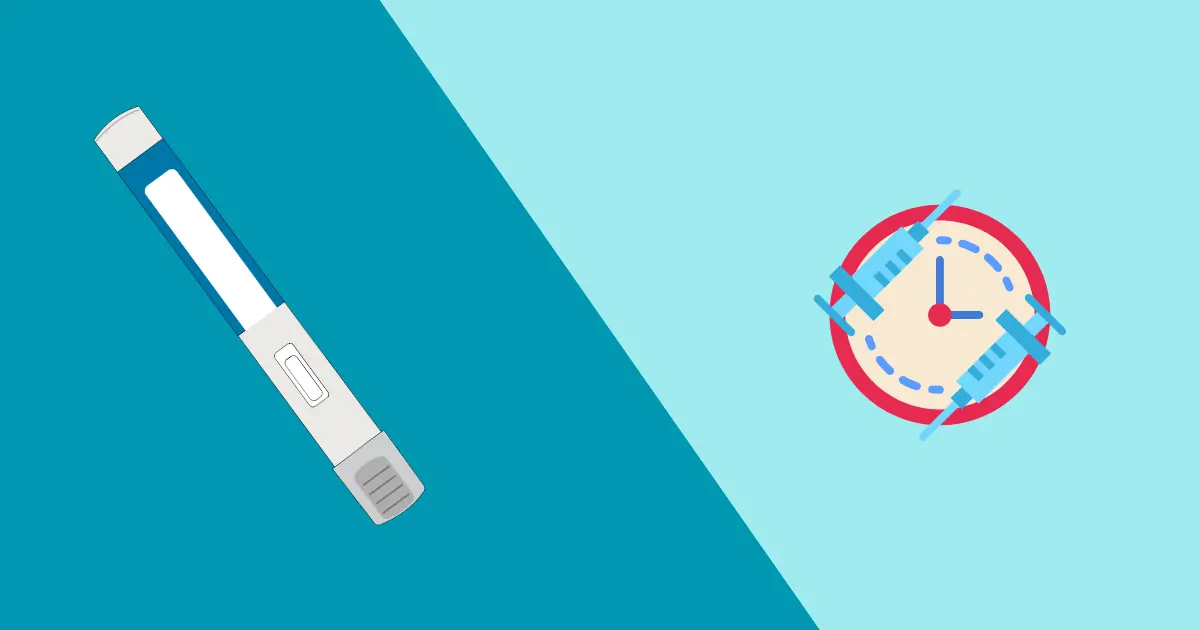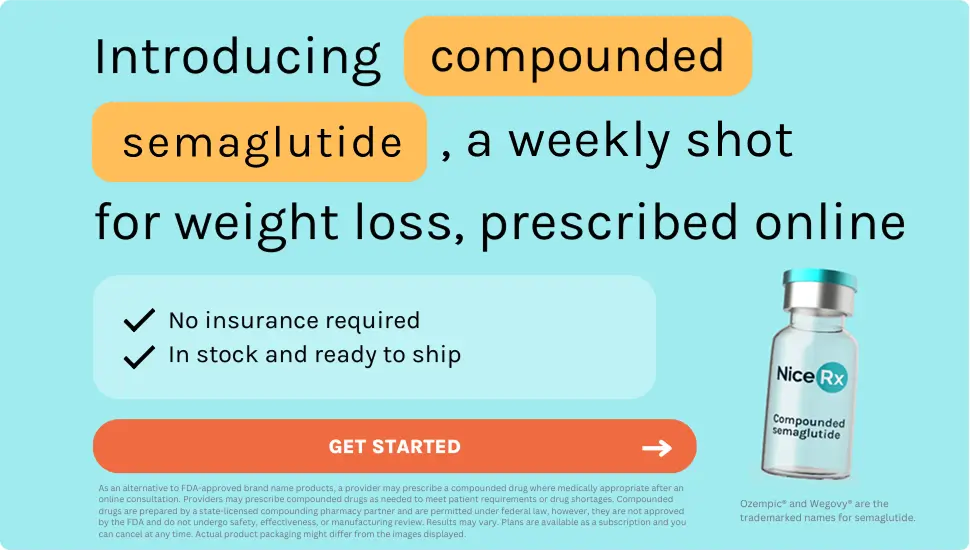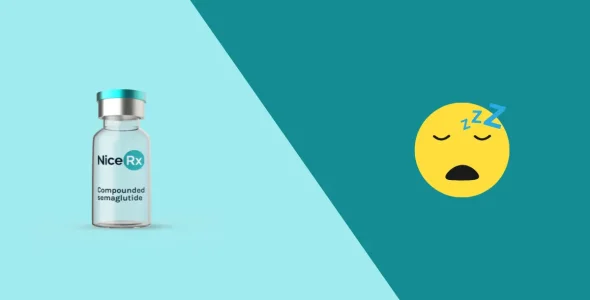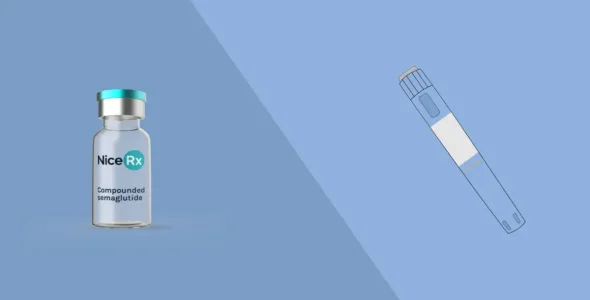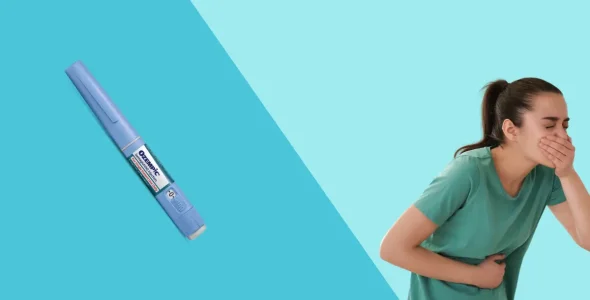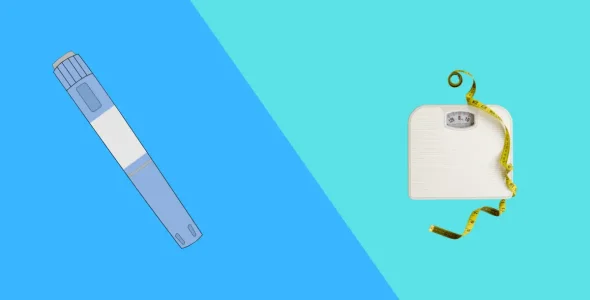Microdosing semaglutide chart: The complete guide to safe, effective low-dose use
Struggling with harsh side effects or high costs, but still want the benefits of semaglutide? Microdosing semaglutide could be your answer, offering gentler weight loss without the nausea and fatigue.
Key highlights
- Microdosing involves administering smaller or sub-therapeutic doses of the medication to get potential benefits without affecting the physiological systems of your body.
- Microdosing semaglutide is getting popular nowadays, but this practice is used only off-label and is not approved by the FDA.
- The initial dosage for semaglutide microdosing is typically 0.05 mg for the first 4 weeks. Afterwards, the dosage is escalated by 0.1 mg every 4 weeks, when needed.
- Microdosing semaglutide has no data related to its safety and efficacy because no clinical trials have been conducted yet. Additionally, most patients use compounded semaglutide for microdosing, which may have safety risks depending on where you buy the medication from.
- If you plan to start semaglutide microdosing, consult a doctor experienced in GLP-1 medications who is willing to prescribe off-label microdoses of semaglutide after a detailed assessment.
Semaglutide, a GLP-1 receptor agonist, has three brand names: Ozempic, Wegovy, and Rybelsus, each approved by the FDA for different indications. Ozempic and Rybelsus are approved for type 2 diabetes, and Wegovy is primarily indicated for weight management in obese and overweight patients, when used along with healthy lifestyle modifications and caloric restrictions.
Microdosing is a practice of using sub-therapeutic doses to potentially obtain the benefits of a medication at lower doses. Microdoses are generally very low doses compared to standard doses and are used off-label. Microdosing is gaining popularity nowadays as this practice potentially reduces the risk of side effects and saves the cost of medication by extending the duration of medication use. It can also be used to test the body’s tolerance and response to semaglutide.
Although microdosing semaglutide has gained significant attention recently, particularly on social media, clinical trials have not confirmed the efficacy and safety of microdosing. Additionally, if you use compounded semaglutide injections for microdosing, they may have certain risks and safety concerns depending on where you buy the medication from. You should only purchase compounded semaglutide from a 503a licensed pharmacy or 503b outsourced facility.
This article provides a comprehensive, evidence-informed (where available), and cautious overview of microdosing semaglutide to empower you to have informed discussions with your healthcare providers.
Remember, microdosing is an off-label practice. The U.S. Food and Drug Administration (FDA) has not approved it yet. This practice carries unknown risks and must be done under strict medical supervision.
Semaglutide: Standard dosing protocol and its mechanism
Semaglutide is a GLP-1 medication. Its active ingredient, semaglutide, has a 94% similar structure to the glucagon-like peptide-1 hormone, a naturally occurring hormone that your body produces after food intake to regulate appetite and blood sugar levels.
When administered, semaglutide crosses the blood-brain barrier, mimics the action of the GLP-1 hormone, and occupies GLP-1 receptors in the brain. Afterwards, the medication works in the following ways:
- Semaglutide alters how your brain’s hunger control center (lateral hypothalamus) regulates appetite. The medication promotes a feeling of fullness by affecting appetite control systems.
- The medication binds to GLP-1 receptors in the pancreas to release insulin from the beta cells of the pancreas and to suppress glucagon secretion from the alpha cells.
- Reduced glucagon secretion and enhanced insulin release lower glucose levels in the blood, which helps achieve optimal glycemic control.
- This medication delays gastric emptying by reducing gut motility and increasing stomach distension. These effects send signals of fullness to your brain through the vagus nerve. As a result, your brain suppresses appetite and reduces the frequency of hunger signals and food cravings.
FDA-approved uses
Ozempic was primarily approved by the U.S. Food and Drug Administration (FDA) for the management of type 2 diabetes mellitus. Currently, the medication is also approved for the following purposes:
- Ozempic helps reduce the risk of major cardiovascular events, including heart attack, stroke, high blood pressure (hypertension), myocardial infarction, and death due to cardiovascular causes.
- The medication also helps lower the risk of kidney failure or the progression of chronic kidney disease in patients with existing kidney conditions and type 2 diabetes.
Healthcare prescribers also prescribe Ozempic for weight loss as an off-label medication.
Wegovy is FDA-approved for supporting weight loss in individuals who meet one of the following criteria:
- Have obesity, defined as a body mass index (BMI) of 30 kg/m² or higher, or;
- Are overweight, with a BMI of 27 kg/m² or higher, and have at least one weight-related health condition. These conditions may include high blood pressure (hypertension), high cholesterol (hypercholesterolemia), moderate to severe obstructive sleep apnea (OSA), or cardiovascular disease.
Additionally, Wegovy is FDA-approved to lower the risk of major adverse cardiovascular events.
Rybelsus is an oral medication approved by the FDA for adults with type 2 diabetes. It is used to improve blood sugar control when combined with a healthy diet and regular physical activity.
Standard dosing protocol
Semaglutide dosing schedules are different for weight loss and diabetes management.
Semaglutide dosing schedule for weight management
Wegovy has the following dosing schedule for weight management.
Starting dose
- Weeks 1–4: 0.25 mg once per week
Titration schedule
- Weeks 5–8: 0.5 mg once weekly
- Weeks 9–12: Your healthcare provider will increase the dose to 1 mg once weekly.
- Weeks 13–16: If well tolerated, the dose will be raised to 1.7 mg once weekly.
- Week 17 and beyond: If further escalation is needed, your provider may increase the dose to 2.4 mg once weekly.
If side effects occur, the dose increase will be postponed for 4 weeks. After that period, your provider will evaluate your response and adjust the dosage as necessary.
Maintenance dose
The recommended maintenance dose of semaglutide for weight loss is either 1.7 mg or 2.4 mg once weekly.
Semaglutide dosing protocol for glycemic control
The dosing schedule of Ozempic for diabetes management is as follows:
Starting dose
- Weeks 1–4: The initial dose of Ozempic is 0.25 mg once weekly.
Titration schedule
- Weeks 5–8: Increase to 0.5 mg once weekly.
- Weeks 9–12 (if necessary): The dose may be raised to 1 mg once weekly if additional glycemic control is needed.
- Week 13 and beyond (if required): If the previous dose is well tolerated and further improvement in blood sugar control is needed, the dose may be increased to 2 mg once weekly.
Maintenance dose
The typical maintenance dosage of Ozempic ranges from 0.5 mg to 2 mg once weekly, based on individual glycemic needs. The purpose of gradual titration is to minimize side effects with dose escalation and achieve therapeutic levels.
Dosing schedules of semaglutide have been established after rigorous clinical trials that determined the safety and efficacy of the medication.
What is microdosing semaglutide?
Micro means “small”. Microdosing semaglutide refers to taking the medication in low doses or administering standard doses at longer intervals than the FDA-recommended dosing guidelines, to get potential benefits with fewer side effects. Healthcare providers may recommend microdosing semaglutide and tirzepatide (Mounjaro and Zepbound) off-label.
For example, the standard lowest dose of semaglutide (Ozempic and Wegovy) is 0.25 mg weekly. In microdosing, semaglutide is typically started at a very low dose of 0.05 mg weekly.
Alternatively, microdosing can also be done by taking standard doses less frequently, at longer intervals. Generally, the semaglutide dose is administered once weekly. In microdosing, your healthcare provider may recommend administering the medication every 10 or 14 days.
Additionally, the titration periods can also be extended with microdoses. Typically, the dosage of semaglutide is escalated after 4 weeks, but microdosing may take longer. Microdosing may take months to reach standard doses.
Why are people microdosing?
Most patients are microdosing due to the following reasons:
Mitigating side effects
Semaglutide is associated with various side effects like nausea, vomiting, abdominal pain, diarrhea, and constipation. These adverse effects are typically dose-dependent, and their risk increases with dosage escalation and at higher doses. Microdoses help lower the risk of these gastrointestinal side effects.
Cost savings by extending the supply
Semaglutide is an expensive medication. Its brand-name medications Ozempic and Wegovy cost approximately $1,000 to $1,300 per month. Microdosing semaglutide helps the medication last longer. This is particularly helpful during drug shortages.
Additionally, most insurance plans cover semaglutide for diabetes but do not offer any coverage when the medication is used solely for weight loss. In microdosing, you can use a single injection twice or thrice longer than standard doses.
Gentler, gradual approach
According to clinical trials, Wegovy reduced 15% of body weight after 68 weeks. These statistics show that Wegovy reduces weight rapidly and significantly. These rapid weight changes can give your body more “shocks”, which can trigger stress, inflammation, and hair loss due to telogen effluvium.
Microdosing offers an option to achieve more sustainable weight loss with fewer “shocks” to the system.
Addressing “Ozempic face”
When you lose weight with semaglutide, rapid weight loss can lead to reduced fat mass and rapid depletion of facial volume, which is referred to as “Ozempic face”. This effect gives your face an aged appearance.
Patients practice microdosing to avoid these consequences. Slow and gradual weight loss with microdosing preserves muscle mass and facial anatomy, reducing the risk of developing an Ozempic face.
Personalized sensitivity
Some patients are highly sensitive to semaglutide compared to others. Microdosing is helpful for such patients, as it allows them to test their body’s response with smaller doses. This helps them avoid intolerable side effects by taking the medication in smaller amounts.
How people are microdosing
There is no FDA-approved method for microdosing. However, patients use the following methods for microdosing semaglutide:
“1-Click Counting” with pre-filled pens
Semaglutide pre-filled pens are manufactured for delivering fixed doses such as 0.25 mg, 0.5 mg, 1 mg, 1.7 mg, 2 mg, and 2.4 mg. The red label pen delivers 0.25 mg, the blue label pen delivers 1 mg, and the yellow label pen delivers a 2 mg dose of semaglutide. Patients manually rotate the wheel at the base of each pen to select the desired dose. For microdosing, they do not select the full dosage and stop rotating the wheel at lower doses.
For example, if you are using a 0.25 mg pen, you can stop rotating the pen at 0.05 mg, which is a microdose of semaglutide. This method can be challenging for you. If you do not understand how to set a dosage, consult your healthcare provider for guidance.
Insulin syringes with multidose vials
With this method, patients use multidose semaglutide vials of the medication, and withdraw the desired dosage with the help of a syringe from the vial and then inject it into the body.
This method can be convenient if you can safely withdraw low doses from the vial. However, it is important to note that branded semaglutide (Ozempic or Wegovy) is not available in the form of vials. You can only get multidose vials of compounded semaglutide. Always buy the compounded medication from FDA-licensed pharmacies or outsourced facilities to ensure the medication meets high-quality standards.
Compounded low-dose versions
With growing popularity, some compounding pharmacies offer compounded semaglutide injections with customized microdoses. You can also try these low-dose injections of compounded semaglutide to avoid dosing errors. This method is more convenient for microdosing than using multidose pens with fixed dosage deliveries.
Benefits of microdosing semaglutide
Let’s get into the benefits of microdosing semaglutide:
Significantly reduced gastrointestinal side effects
Standard semaglutide doses have certain common side effects such as nausea, vomiting, bloating, abdominal pain, stomach ache, constipation, and diarrhea. These side effects worsen when you increase the doses of the medication.
STEP 1 to STEP 3 clinical trial data show that 6-7% of patients discontinued semaglutide treatment due to side effects compared to 3 to 4% patients in the placebo group.
Microdosing semaglutide may help with improved patient tolerability and adherence by lowering the risk of these adverse events due to very small doses of semaglutide. Your body adjusts to the medication slowly and gradually, without showing any adverse reactions.
Gradual and sustainable weight loss
Semaglutide can reduce 5 to 15% of body weight when used in long-term treatment. However, this significant weight reduction leads to fat loss, especially in the face. It may change your facial appearance due to significant weight loss and skin laxity. Signs of aging begin to appear earlier.
Microdosing semaglutide helps lose weight more slowly, prevents sudden fat loss, and maintains facial appearance.
Improved glucose control
Although microdosing is not approved by the FDA, healthcare professionals prescribe microdoses of semaglutide to improve blood sugar control. Microdosing can be helpful for pre-diabetics or those patients who have slightly elevated blood glucose levels.
Anti-inflammatory benefits for reducing inflammation
Research studies show that semaglutide reduces inflammation in the body and has a protective role in the body’s metabolism, liver, kidneys, and cardiovascular system. The medication reduces inflammatory cytokines and modulates the immune system through various pathways.
In STEP 1-3 clinical trials, a weekly dose of 2.4 mg semaglutide resulted in a 49% reduction in C-reactive protein (CRP) levels, while a 1 mg weekly dose led to a 42% decrease, compared to placebo after 68 weeks. CRP is an acute-phase protein that indicates systemic inflammation and is strongly linked to insulin resistance.
The following studies show the anti-inflammatory benefits of semaglutide on various inflammatory diseases:
Microdosing semaglutide anti-inflammatory benefits
| Treatment | Patients/Samples | Dose/Duration | Effects |
|---|---|---|---|
| Semaglutide | 40 men with Type 2 Diabetes Mellitus | 1 mg/week for 6 months (injection) | Decreased levels of inflammatory cytokines (TNF-α and IL-6) |
| Semaglutide | 20 individuals with Type 2 Diabetes Mellitus | 1 mg/week for 3 months (injection) | Minor alterations in some inflammatory markers (e.g., CRP, IL-6) |
| Semaglutide | Individuals with Type 2 Diabetes Mellitus | – | Linked to lower levels of high-sensitivity C-reactive protein (hsCRP) compared to baseline in patients with Type 2 Diabetes Mellitus |
| Semaglutide | Obese patients diagnosed with Type 2 Diabetes Mellitus | 0.25 mg/week for 4 weeks, increased to 0.50 mg/week for 16 weeks, then 1 mg/week for 10 months | Reduced symptoms of psoriasis, and improved epicardial fat volume and inflammation |
| Semaglutide | Patients with Type 2 Diabetes Mellitus and chronic kidney disease | 3 mg/day for 9 months (oral) | Enhanced kidney function, possibly through a reduction in inflammation |
| Semaglutide | Epicardial fat biopsies of patients undergoing open-heart surgery | – | Reduced neutrophil adhesion to endothelial cells and promoted angiogenesis |
| Semaglutide | Epicardial fat biopsies of patients undergoing cardiac surgery | – | Induced effects that prevent thrombosis and atherosclerosis by suppressing neutrophil activity |
These studies were conducted for standard doses of semaglutide. No research studies on the anti-inflammatory effects of microdosing semaglutide have been published until now.
Metabolic health benefits at lower doses
Semaglutide improves metabolic health, promotes blood sugar control, and reduces inflammation and the risk of cardiovascular diseases by improving cardiovascular markers.
A SUSTAIN 6 clinical trial involved 3,297 patients who received once weekly semaglutide for 104 weeks. It was reported that 83% of these patients have an established cardiovascular disease, kidney disease (CKD), or both. As a result, there was a marked reduction in the incidence of major adverse cardiovascular events (MACE) such as non-fatal heart attack, stroke, and death. The incidence of heart failure was reduced by 59%, non-fatal stroke by 27%, and non-fatal heart attack by 47%.
In the same study, HbA1c levels were reduced by 1.1% to 1.4%. Patients lost between 3.7kg and 4.9kg of body weight. Additionally, patients also showed marked improvement in their lipid profiles.
Cost-effectiveness and accessibility
Branded semaglutide (Ozempic, Rybelsus, and Wegovy) is expensive. Ozempic and Wegovy may cost around $1,000 to $1,300 or more without insurance when you purchase from the local market. Moreover, most insurance policies do not cover Wegovy or Ozempic (off-label) if your doctor prescribes them solely for weight management. Most insurance policies consider weight management as a cosmetic concern rather than a medical need. That is why most patients purchase semaglutide without insurance or use compounded semaglutide for weight loss when personalized formulations are needed.
Microdosing can extend the duration of each dose. For example, a 0.25 mg injection is the standard starting dose of semaglutide. With microdosing, you can divide this injection into 5 injections of 0.05 mg each. This way, the 0.25 mg injection, which was supposed to be used for one week, can be used for 5 weeks.
Microdosing can also be used as a temporary strategy during shortages of Ozempic and Wegovy. This practice makes semaglutide more affordable for cash-paying patients.
Behavioral and lifestyle alignment
Research studies show that semaglutide decreases patients’ inclination toward fatty, oily, processed, and high-calorie foods by reducing appetite and improving satiety. However, it becomes challenging for patients to suddenly quit unhealthy habits and shift toward a healthy lifestyle.
Microdosing semaglutide suppresses appetite more slowly and gradually compared to standard doses. This practice gives patients more time to adapt to a healthy lifestyle. Additionally, microdoses are also helpful for reducing hedonic eating.
Microdosing semaglutide schedule: How to microdose semaglutide
The initial or starting microdose of semaglutide is typically 0.05 mg weekly. Afterwards, your healthcare professional will escalate the dose by 0.1 mg every 4 weeks after assessing your health condition and according to your body’s tolerance.
Although there is no FDA-recommended dosing schedule for microdosing semaglutide, healthcare professionals generally recommend the following schedule:
- Week 1-4: 0.05 mg weekly
- Week 5-8: 0.1 mg weekly
- Week 9-12: 0.2 mg weekly
Another method to microdose semaglutide may involve increasing the time interval between standard doses. For example, standard dosing protocol involves administering 0.25 mg once a week. In microdosing, your doctor may recommend giving a 2-week gap between two doses.
Your healthcare professional will increase or decrease microdoses of semaglutide based on how your body responds and how much weight loss or glycemic control you want to achieve.
Risks and considerations for microdosing semaglutide
Microdosing semaglutide can have the following side effects:
Lack of clinical evidence, safety data, and FDA approval
Microdosing semaglutide is not recommended by the FDA for weight management or glycemic control. The safety data for semaglutide microdosing is also limited because microdosing protocols are not supported by large-scale clinical trials or rigorous testing. Moreover, the effectiveness of semaglutide microdoses for weight loss, glycemic control, or metabolic control is also largely anecdotal, and no clinical studies have proved it yet.
As microdosing semaglutide involves sub-therapeutic doses, you may experience extremely negligible or no clinical benefits at all. It mainly depends on how your body responds to the blood glucose-lowering effect of the medication.
Reduced effectiveness for the primary health condition
Semaglutide is primarily used for managing blood glucose levels in patients with type 2 diabetes. The medication lowers blood sugar levels effectively when used according to the FDA-recommended dosing schedule and by administering FDA-approved doses (0.25 mg, 0.5 mg, 1 mg, and 2 mg). When you use sub-therapeutic doses (for example, 0.05 mg), the medication may not be as effective as standard doses, and you may not achieve adequate blood sugar control.
Similarly, Wegovy reduces body weight effectively when you use its standard doses (0.25, 0.5 mg, 1 mg, 1.7 mg, and 2.4 mg). With microdoses, you may experience less pronounced weight loss results compared to standard and clinically proven doses.
Dosing inaccuracy and errors
Microdosing has a higher risk of inaccurate dosing and errors. Semaglutide pre-filled pens are designed for single doses and consistent delivery. Administering fractional doses of semaglutide with the click counting method may be challenging for many patients.
Patients who use multiple-dose vials and administer the dose with the help of a syringe also have a greater risk of overdosing or underdosing. They may not understand how much semaglutide they have to withdraw from the vial and inject. Underdosing might not help achieve desired outcomes, and overdosing can result in serious adverse events. In addition, there is also an increased risk of skin infections with this method.
Challenges with the administration
Semaglutide pens are available in fixed and standard doses. Using these pre-filled pens for delivering fractional doses is quite challenging. Patients may not understand how many times they have to click to get a certain dose.
Many pharmacies sell compounded semaglutide injections in microdoses. Compounded medications can have potential safety concerns. For example, the FDA has reported that some compounded semaglutide products might contain semaglutide salts (semaglutide acetate and semaglutide sodium) instead of semaglutide base, which is present in FDA-approved branded medications. The FDA warns users not to use compounded semaglutide that contains semaglutide salts. Moreover, compounded semaglutide also has a higher risk of contamination with other drugs. The quality of the medication depends on the standard of the compounding pharmacy. Always buy compounded medications from state-licensed compounding pharmacies (503a) or FDA-licensed outsourced facilities (503b) to ensure compounded medications are not harmful.
Many patients use multidose vials and syringes to administer microdoses of semaglutide. If they do not follow antiseptic measures, they are more prone to getting skin infections due to improper handling and needle reuse. Sharing needles with family members also increases the risk of spreading infections. If you are using a syringe to inject semaglutide, use a sealed and unopened syringe every time. Do not reuse the syringe and never share your syringe with anyone.
The shelf life of prefilled semaglutide injections is 8 weeks (56 days) after opening if stored properly in the refrigerator. Compounded semaglutide can be used for 28-56 days only. Patients might be unaware of these shelf life limits. They may administer expired medication as microdosing extends the time of using the medication.
Importance of medical supervision
If you plan to start semaglutide microdosing, consult a healthcare provider experienced in GLP-1 medications first. Microdosing is not safe for everyone, especially those patients who have uncontrolled diabetes. For microdosing, patients should be educated enough to follow and understand complex dosing instructions.
After starting the medication, stay in contact with your healthcare provider for dosing guidelines, monitoring side effects, and managing potential risks. Keep a track of your blood glucose levels, weight changes, and side effects. Discuss them with your healthcare provider during follow-up sessions, and they will adjust the dose accordingly.
Potential for unknown long-term side effects
There is insufficient data on the long-term safety and efficacy of microdosing protocols. Microdosing may cause long-term side effects, similar to standard doses of semaglutide. More research studies are still needed to assess the safety of microdosing semaglutide on a long-term basis.
Additionally, weight changes may revert once you stop microdosing, as seen with standard semaglutide doses.
Potential side effects and how to manage them
Common side effects of microdosing semaglutide are similar to standard doses. These are:
- Nausea
- Vomiting
- Constipation
- Diarrhea
- Abdominal discomfort
- Stomach ache
Rare but serious adverse effects include:
- Pancreatitis
- Gallstones or gallbladder diseases
- Acute kidney injury
- Increased risk of aspiration (food getting into the airway) during invasive procedures that require sedation and anesthesia
- Excessive burping
- Ozempic face
- Mood and behavioural changes
- Suicidal ideation
- Allergic reactions
In rodent studies, semaglutide increased the risk of thyroid tumors such as medullary thyroid cancer (MTC) and endocrine disorders like MEN 2 syndrome (Multiple endocrine neoplasia type 2 syndrome). The medication is contraindicated for patients with personal or family history of these problems.
In addition, semaglutide is not suitable for breastfeeding and pregnant females.
You can practice these lifestyle changes to reduce side effects:
- Keep your body well hydrated by drinking adequate water.
- Eat frequently, but in smaller portions to avoid nausea.
- You can avoid vomiting with over-the-counter remedies such as ginger tea.
- Take regular exercise and stay physically active to prevent bloating and gastrointestinal issues.
- Add nutrient-rich foods to your diet plan, particularly those rich in proteins and dietary fibers.
- Practice yoga, meditation, and stress management techniques to reduce stress and anxiety.
- Sleep for at least 7-8 hours at night, as sleep influences your body functions.
Where to get semaglutide for microdosing
You can use standard semaglutide pre-filled injections (0.25 mg, 0.5 mg, 1 mg, 1.7 mg, 2 mg, and 2.4 mg) for microdosing.
The following tables describe how many clicks can deliver how much dosage when using standard semaglutide pens:
Semaglutide multi-dose pen (0.25/0.5 mg)
| Dosage | Number of clicks | Frequency |
|---|---|---|
| 0.06 mg | 9 clicks | Once weekly |
| 0.13 mg | 18 clicks | Once weekly |
| 0.25 mg | 36 clicks | Once weekly |
| 0.29 mg | 42 clicks | Once weekly |
| 0.33 mg | 48 clicks | Once weekly |
| 0.38 mg | 54 clicks | Once weekly |
| 0.42 mg | 60 clicks | Once weekly |
| 0.46 mg | 66 clicks | Once weekly |
| 0.5 mg | 72 clicks | Once weekly |
Semaglutide multi-dose pen (1 mg)
| Dosage | Number of clicks | Frequency |
|---|---|---|
| 0.13 mg | 9 clicks | Once weekly |
| 0.25 mg | 18 clicks | Once weekly |
| 0.5 mg | 36 clicks | Once weekly |
| 0.58 mg | 42 clicks | Once weekly |
| 0.67 mg | 48 clicks | Once weekly |
| 0.75 mg | 54 clicks | Once weekly |
| 0.83 mg | 60 clicks | Once weekly |
| 0.92 mg | 66 clicks | Once weekly |
| 1 mg | 72 clicks | Once weekly |
Semaglutide multi-dose pen (2 mg)
| Dosage | Number of clicks | Frequency |
|---|---|---|
| 0.25 mg | 9 clicks | Once weekly |
| 0.5 mg | 18 clicks | Once weekly |
| 1 mg | 36 clicks | Once weekly |
| 1.17 mg | 42 clicks | Once weekly |
| 1.33 mg | 48 clicks | Once weekly |
| 1.5 mg | 54 clicks | Once weekly |
| 1.67 mg | 60 clicks | Once weekly |
| 1.83 mg | 66 clicks | Once weekly |
| 2 mg | 72 clicks | Once weekly |
Additionally, some compounding pharmacies offer compounded semaglutide with microdoses. You will need to get a personalized prescription and dosing schedule from your healthcare provider. Afterwards, compounding pharmacies will provide you with a compounded semaglutide vial and syringes that you can use for administering microdoses.
Finding a qualified healthcare provider
If you plan to start semaglutide microdosing, consult a healthcare professional experienced in GLP-1s. Additionally, choose a doctor who is willing to discuss off-label uses of semaglutide.
When you visit your doctor or consult with one online, ask the following questions:
- What will be my microdosing schedule?
- Is it beneficial for weight management and glycemic control?
- How effective will microdosing be for my condition?
- Is it safe?
- Any caution or preventive measures that I should follow during treatment?
- Where can I get microdoses of semaglutide?
- If I use pre-filled injections of Ozempic or Wegovy, how will I calculate my dosage?
- Are there any long-term side effects?
- What to do if I experience side effects?
- Can I use compounded semaglutide for microdosing?
- Will insurance plans cover semaglutide microdosing?
Compounded vs. brand-name medications
Compounded semaglutide is not approved by the FDA for weight loss or diabetes. It is a customized version of semaglutide that is made to meet certain needs of the patient.
Compounded semaglutide is used when the patient cannot use the brand-name medication, when the patient is allergic to certain ingredients of the brand-name medication or the patient needs a customized version free of that allergen, or when there is a need for personalized dosing. Additionally, compounded semaglutide is considered an alternative to Ozempic and Wegovy during shortages of these medications.
However, the quality of compounded semaglutide may vary, depending on the standard of the compounding pharmacy. Always ask your healthcare provider to recommend a reliable and licensed compounding pharmacy or an outsourcing facility to get compounded medications.
The following are a few tips on how to vet compounding pharmacies:
- The compounding pharmacy must be reputable and licensed for compounding medications.
- The pharmacy should be accredited by the National Association of Pharmacy Boards (NABP), or included in outsourcing facilities (pharmacies registered with the FDA).
- They require a valid prescription from an authorized healthcare provider.
- The compounding pharmacy strictly follows quality control measures as regulated by the state board of pharmacy and the FDA.
Additionally, you can also try the FDA’s BeSafeRx tool to choose a reputable compounding pharmacy. Your doctor can also provide you with information regarding reliable compounding pharmacies.
Monitoring and adjustment
While microdosing semaglutide, track your body weight, blood sugar levels, and side effects daily by using an app on your cell phone or a diary. Show them to your doctor on your next visit so they can adjust your dosage accordingly.
There is no one-size-fits-all rule for semaglutide microdosing. Individual responses may vary. This is why you should always keep a record of your progress and share it with your doctor, who can make personalized adjustments to your treatment plan.
Keep a record of the number of clicks before injecting the dosage with multi-dose pens. Click counting helps calculate the dosage of semaglutide accurately.
Semaglutide microdosing FAQs
What is the difference between microdosing and standard semaglutide dosing?
Microdosing involves taking small, fractional, or sub-therapeutic doses that are used off-label to get potential benefits from the medication with minimal side effects. In comparison, the standard semaglutide dosing schedule is approved by the FDA for therapeutic purposes. For example, 0.25 mg is a standard dose of semaglutide, and 0.05 mg (approximately one-fifth the standard dose) is a microdose of semaglutide.
Is microdosing semaglutide safe?
Like standard dosing, microdosing semaglutide is supposed to be safe. However, there are no research studies or clinical trials to confirm the safety of microdosing semaglutide.
Will microdosing lead to significant weight loss?
Microdosing may result in weight loss, but you will achieve weight reduction very slowly and gradually, as compared to standard doses. It varies among individuals and some patients may observe significant weight loss while others may get little or no clinical benefits.
How do people typically administer microdoses?
People typically administer microdoses with the help of the click counting method when using prefilled pens of semaglutide and by using a syringe and multidose vials, or personalized doses of compounded semaglutide.
What about “Ozempic face” – can microdosing prevent it?
Theoretically, microdosing can help prevent Ozempic face as this practice reduces body weight more slowly compared to standard doses, and the fat loss is much slower. Slow and gradual weight loss may help prevent Ozempic face. Further research is still needed to confirm these facts.
Are compounded semaglutide products safe for microdosing?
The safety of compounded products depends on the quality standard of a compounding pharmacy. If you get them from reputable outsourcing facilities or licensed pharmacies, the medication is generally safe.
Can microdosing be used for weight maintenance after reaching a goal?
Yes, microdosing can be used for sustainable weight loss or weight maintenance after reaching your weight loss goal. However, it is recommended to consult your healthcare provider to discuss whether the medication helps maintain body weight.
Is microdosing semaglutide FDA-approved?
No, microdosing semaglutide is not approved by the FDA. Healthcare professionals prescribe microdosing off-label.
Can I microdose semaglutide without a prescription?
No, you cannot microdose without a prescription. You need to consult a licensed healthcare provider first to get the prescription after a detailed assessment, before starting semaglutide microdosing.
How long until I see weight loss results?
There is no definite timeline for semaglutide microdosing to show weight loss results, as no clinical trials have been conducted to confirm the effectiveness of microdosing. However, you may see weight loss after a few months, depending on your current body mass index and how quickly your body responds to the medication.
Is microdosing safer than full-dose semaglutide?
Microdosing may be safer than full-dose semaglutide as the medication is given in very low doses that do not typically cause serious adverse effects. However, clinical studies are still needed to confirm the safety of semaglutide microdosing.
Can I stack semaglutide with other peptides (e.g., BPC-157)?
According to the FDA, BPC-157 may pose a risk for immunogenicity when combined with compounded medications. There is a lack of information and research on the safety of BPC-157 in humans.
Conclusion: Is microdosing semaglutide right for you?
Microdosing is a practice in which your healthcare professional prescribes you smaller or fractional doses of the medication. These are not intended to achieve full therapeutic effect as standard doses, but to get slow and gradual results. Microdosing semaglutide is helpful for patients who want to lose weight slowly with minimal side effects and those who cannot tolerate standard doses or cannot afford the medication. Microdosing is also helpful during drug shortages.
Although microdosing semaglutide is compelling, it is an unproven strategy that is not approved by the FDA. It may be recommended by providers off-label to fulfill patient needs and address challenges associated with standard treatment protocols. While it presents a gentler path for many patients, the risks, particularly related to the lack of clinical evidence, are substantial.
Before making a decision to start microdosing, carefully consider all pros and cons and discuss them with your healthcare provider who is experienced in GLP-1 medications. Always prioritize safety and evidence-based care above all else.
